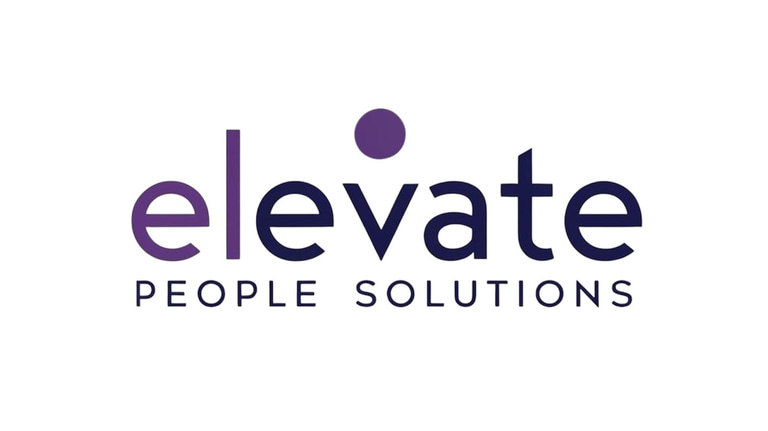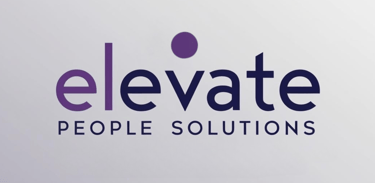What I've Learned from HR Tech Implementations
Implementing HR systems is a strategic project that affects your people, processes, and culture. In this article, I share first-hand lessons from HR tech implementations in mid-size organizations.
Milena Milosevic
6/23/20257 min read


Implementing an HR system or a broader HR platform is a project that requires a clear structure—defined activities, roles, stakeholders, schedules, dependencies and resources. This investment impacts more than just money; it affects processes, people, and culture. Research shows many HR tech projects struggle, with up to 42% failing or underperforming within two years. This highlights why thorough planning, clear needs analysis, and strong change management are essential for success.
This is a key lesson I’ve learned, and it sets the context for this article—an overview of potentially overlooked project scope points, based on my own experience, including what worked and what didn’t when implementing HR tech (HR systems) in mid-size organizations.
0. Before You Choose a Tool
The decision to implement HR tech is a sign that your function is maturing, that you’re aware of your organizational needs, and leadership sees value in allocating budget and supporting such a move. At least, these strategic foundations should be in place before looking at tools.
Useful considerations for this stage:
Confirm strategic alignment – Ensure the tool supports long-term HR goals, not just current pain points.
The needs:
Thoroughly explore - You have to know what you are looking for. It can’t just be: “We need a payroll system”. Understand workflows, pain points, automation plans, legal and compliance needs. These translate into specific system requirements.
Include data and analytics – What insights or reports do you expect the system to deliver? More than once, we realized too late that the tool we were using couldn’t provide the management information we needed—a gap we didn’t predict when choosing the tool years earlier.
Classify the needs. A simple structure like “non-negotiable,” “optional/not critical but adds value,” and “nice to have” worked well for me.
At this stage, asking a question “Do we really need this tool?” is legitimate and valuable. For example, when we reduced office space during COVID, we realized we didn’t actually need a desk reservation system. Another time, faced with a small budget for an engagement survey platform, we temporarily used our existing learning tool and free survey platforms until the next year when we secured the budget for a dedicated engagement platform. It wasn’t ideal, but it worked because it was affordable and accessible.
Define your internal admin model and capacity. Will HR own the tool? Will admins be needed per country or team, and do you have resources to support that? Clarify this before evaluating tools and planning resources.
If you're considering building an in-house solution instead of buying—be cautious. It’s resource-heavy, time-consuming, and rarely worth it unless you’re developing a product to sell. There are already excellent solutions built by experts.
Regardless of who’s leading the project, a good project manager brings the right people into the right stages and includes stakeholders early. At first, it might seem like everyone wants to join in—but too many opinions can derail the focus. Prioritize input from process owners and end users. You could do stakeholder mapping or RACI matrix.
Map out your scope and plan – Assign owners, define clear activities, and regularly update your plan. Expect surprises.
Be realistic with the:
Budget – Include not just licensing but configuration, training, adoption, and ongoing support
Timeline – Allow time for testing, training, communication, gradual adoption, and ad hoc adjustments. Often, the real work begins after implementation.
1. Choosing the Vendor/System
While features like integration capabilities of the system, cross-device accessibility, compliance and data security have become a basic criteria over the years, sometimes we might overlook even the basics—let alone the unexpected.
Useful considerations for this stage
A comprehensive HR management system or a specific tool? This should align with the organization's strategic objectives, resource availability, and HR requirements.
Consider factors like:
Depth of features that you need - If specific HR functions require advanced capabilities, best-of-breed tools can provide the necessary depth.
Frequency of expected tool usage - If it is engagement platform that people will need to click the link to fill in survey a couple of times per year – go for it. But if you have the growing number of tools people need to use daily, consider switching to a more integrated HRIS.
Size and complexity of your HR operation - Larger or more complex teams often benefit from comprehensive platforms to streamline processes. Smaller or simpler teams may prefer specialized tools that are easier to manage.
Is the system scalable – Can it follow your growth (increase in users, data volume, and additional features without compromising performance or usability)?
Is the product suitable for your market(s)? Consider whether it complies with local regulations, regional HR practices, supports the required languages. We once implemented a well-established payroll system across our multiple jurisdictions, but for one specific country in our group, it turned out to be overly complex. The vendor didn’t fully understand the local requirements and couldn’t provide the right support. In the end, we had to rely on more in-house resources to compensate for the gaps in system configuration.
Evaluate vendor roadmap and funding – Ensure the vendor is stable and can deliver promised upgrade.
Type of system – is it just digital form-filling, or does it actually add value? Some tools only replicate manual processes in a digital format—users fill out forms, but there's no real intelligence behind it. Others are more dynamic: they come with pre-defined competencies, built-in workflows, recommended actions. These kinds of systems support better decision-making and help drive adoption because they feel useful, not just like extra admin.
Reporting and analytics – As mentioned in the preparation stage, this has to cover for at least your basic requirements.
Check for flexibility of the system – from features to settings. This was probably my hardest-earned lesson. Due to lack of system features customization, we had to build an entire workaround just to make use of it.
We faced a similar issue with access levels: it was basically all or nothing - choosing between assigning full access or restricting it to the point of making it hard for people to do their jobs effectively.Ensure the system fits your process and workflow. Even a flexible system can have rigid workflows (approval chains, collaboration points, task ownership). If the system requires you to reshape your established processes just to make it work, it’s probably not the right fit.
Cultural compatibility – Yes, tools can clash with company culture. For example, some tools use a language or push a process that just doesn’t resonate with your people—even if the tool itself is great. We ran into this one when exploring performance management systems. And if you're thinking: “That is good, the tool will create a cultural shift on its own”, that's not how it works. Culture change needs to come first; the tool can only support it.
Look for DEI-focused features like bias-free resume screening, inclusive job descriptions, skills-based assessments, and accessibility support (e.g. screen reader compatibility). These tools help you build a fairer process now and future-proof your strategy.
Availability of support resources and training materials. Look for vendors that provide strong support—help centers, onboarding guides, or even live assistance when needed.
Avoid vendor lock-in by clarifying data ownership, contract terms, and ease of migration. Also, build internal know-how so you’re not fully dependent on the vendor.
If you don’t have in-house legal, IT, or compliance teams, focus on key risks like data security, contracts, and privacy. Ask vendors the right questions (AI can help), look for clear documentation, and use external experts when needed. Choose transparent vendors with solid policies and references.
2. Implementation
Useful considerations for this stage
Change management is a critical component of every HR tech implementation. It covers how people experience the transition, how it's communicated, and how leaders model the behavior. Plan for it - especially when it involves sensitive areas like performance management, feedback tools, or anything that requires managers and employees to switch routines. Even something as simple as not sending CVs to the recruiter’s inbox anymore can create resistance if not explained well.
Think about data preparation and migration early. Clean up existing data, define key fields, and write basic usage rules. Standardize how the system should be used across locations or teams, train users and create internal documentation to avoid future data chaos. Inconsistent usage led us to several data cleanup projects.
Assign a system owner - someone responsible for managing vendor relations, coordinating updates, and being the go-to for escalations.
Access levels – Assign permissions wisely to support workflows while maintaining security.
Don’t forget Legal, IT, and Compliance. You’ll need legal for contracts and GDPR review, and IT to support infrastructure and ensure security. HR systems don’t work in isolation. Ours failed to deliver invitation emails to employees at first due to security settings.
The project needs to be transparent to top management. If relevant – include key function leads into decision on vendors. When I launched platform for enabling job leveling and competencies, Director of the function was included in the decision – as he saw the need firsthand. Get line managers onboard and work with them on how they can support the adoption on team level.
Communicate early – Plan a communication schedule that includes pre-launch education. Avoid last-minute emails “This week we’re launching X; complete it by Friday.”
Respect the business calendar and team capacity. Launching during peak periods, like high season or major business events, can seriously affect adoption. Similarly, if your recruiter is already swamped with open vacancies, the last thing they need is to deal with an ATS migration on top of that.
3. What Happens After the Launch
As noted earlier, the real work begins after implementation.
Useful considerations for this stage
Schedule periodic system audits. Assess system accuracy, data quality, and access levels every 6–12 months to prevent bad data piling up and outdated settings affecting daily work.
Establish a support system – Designate go-to people or help resources for troubleshooting.
Provide ongoing user training – Use refresher sessions, in-app tips, or cheat sheets to support continued use. Make sure new features are covered timely and include system training in your onboarding process for new employees. You can make this time efficient by using different formats—like short videos and simple manuals stored in a shared space.
Track adoption, monitor progress and gather feedback from key stakeholders to continuously improve. Adoption is so important; it’s a topic on its own!
Plan for feature updates or vendor changes. Stay informed about vendor updates and industry trends and decide in advance how you’ll handle changes (e.g. upgrades, price changes).
Document lessons learned and changes. Capture what worked well and what didn’t during implementation and early usage to inform future projects. Create unique database for system rules and changes and make them available to relevant users.
----------------------------------
At Elevate People Solutions, we partner with business leaders and HR professionals to build people strategies and solutions that grow with your organization. Whether you’re starting from scratch or improving what’s already in place, we offer practical, strategic, and hands-on support to help you move forward.
Get in touch if you’d like to explore how we can support you.


